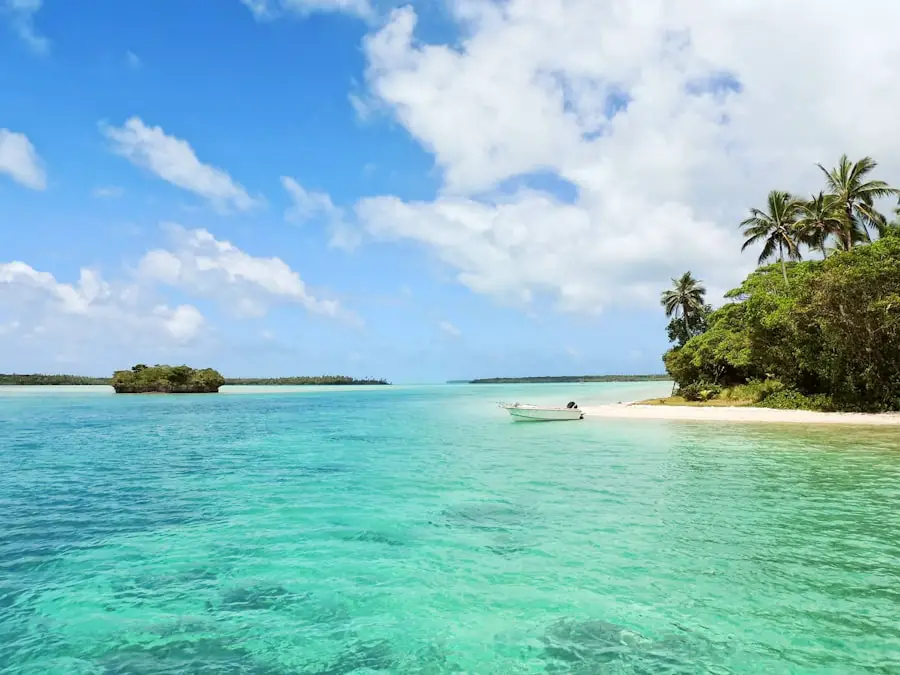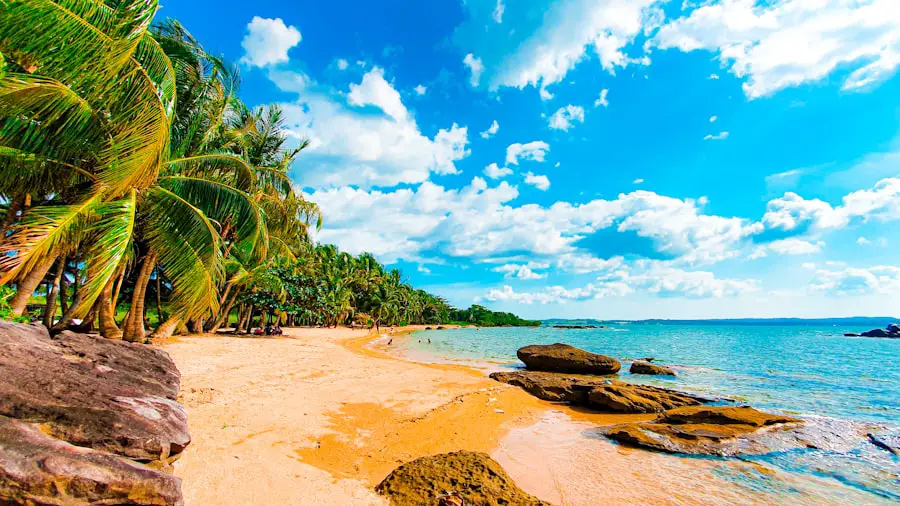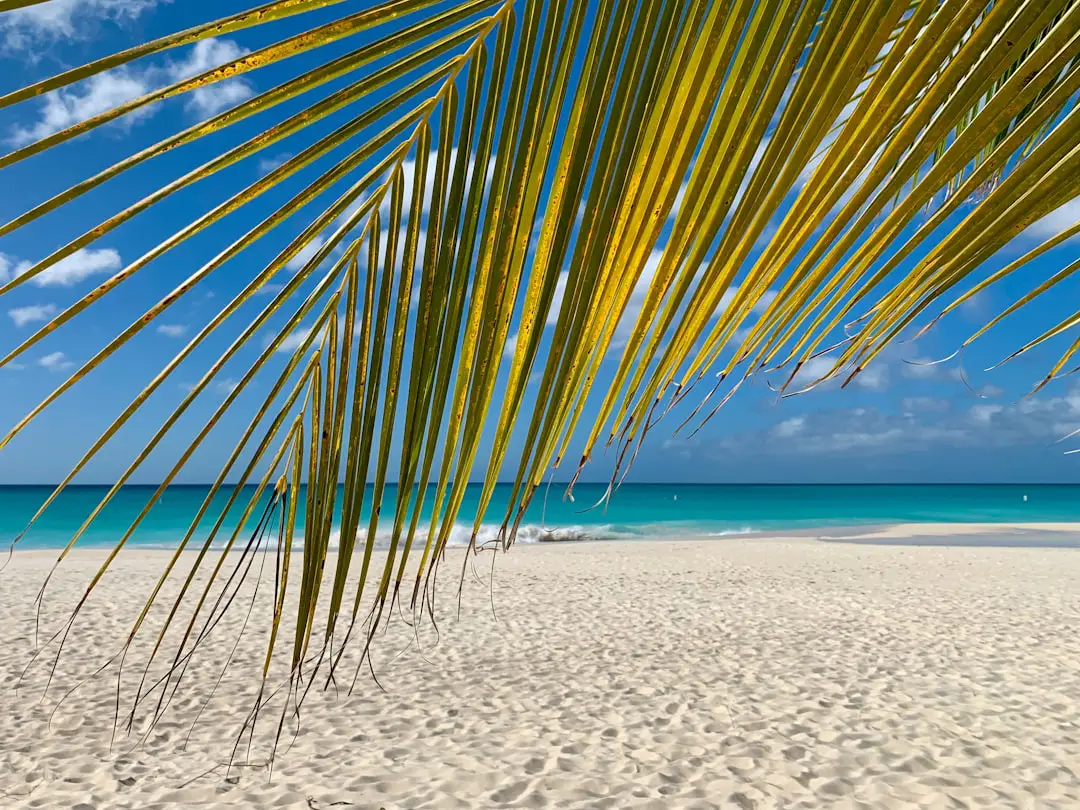The Maldives, an archipelago of 26 atolls in the Indian Ocean, is renowned for its stunning beaches, crystal-clear waters, and vibrant marine life. The climate in this tropical paradise is characterized by a warm, humid atmosphere year-round, with temperatures typically ranging from 77°F to 95°F (25°C to 35°C). The Maldives experiences two main seasons: the dry northeast monsoon, known as the Iruvai, which lasts from November to April, and the wet southwest monsoon, called the Hulhangu, which occurs from May to October.
This climatic dichotomy significantly influences travel patterns and activities available to visitors. The Iruvai season is marked by clear skies and minimal rainfall, making it the most popular time for tourists. Conversely, the Hulhangu season brings increased humidity and frequent rain showers, although these downpours are often brief and interspersed with sunny intervals.
Understanding this climatic framework is essential for travelers looking to optimize their experience in the Maldives. The interplay of weather patterns not only affects beach days but also influences marine life behavior, making it crucial for diving and snorkeling enthusiasts to plan their trips accordingly.
Key Takeaways
- The Maldives has a tropical climate with two distinct seasons: dry season (November to April) and wet season (May to October).
- The peak season in the Maldives is from December to March, offering ideal weather for beach activities and water sports.
- The off-peak season, from May to October, provides budget-friendly travel options with lower accommodation rates and fewer crowds.
- Shoulder seasons, such as April and November, offer a balance between good weather and lower costs for travelers.
- Special events and festivals in the Maldives, such as Ramadan and Eid al-Fitr, can offer unique cultural experiences for visitors.
Peak Season: The Best Time to Visit for Ideal Weather
The peak season in the Maldives runs from December to April, coinciding with the dry northeast monsoon. During this period, visitors can expect idyllic weather conditions characterized by low humidity, abundant sunshine, and minimal rainfall. The average daily temperature hovers around 82°F (28°C), creating a perfect environment for sunbathing on pristine beaches or engaging in water sports.
This season attracts a significant influx of tourists, leading to vibrant atmospheres in resorts and local attractions. Traveling during peak season does come with its challenges. The high demand for accommodations often results in inflated prices, particularly around holidays such as Christmas and New Year’s.
However, the experience of enjoying the Maldives in its prime weather conditions can be worth the extra expense. Many resorts offer special packages during this time, including romantic dinners on the beach or exclusive excursions to uninhabited islands. For those who prioritize comfort and convenience, visiting during peak season ensures access to a wide range of activities and amenities.
Off-Peak Season: Budget-Friendly Travel Options

The off-peak season in the Maldives spans from May to October, coinciding with the southwest monsoon. While this period is often associated with increased rainfall and humidity, it also presents an opportunity for budget-conscious travelers to explore the islands without breaking the bank. During these months, many resorts offer significant discounts on accommodation rates and packages, making it an attractive option for those looking to experience the beauty of the Maldives at a lower cost.
Despite the potential for rain, visiting during the off-peak season can still provide ample opportunities for enjoyment. Rain showers are typically short-lived and often occur in the late afternoon or evening, leaving plenty of time for outdoor activities during the day. Additionally, the off-peak season is less crowded, allowing travelers to enjoy a more tranquil experience on the islands.
For instance, snorkeling and diving enthusiasts may find that marine life is more active during this time due to nutrient-rich waters brought by monsoon currents. This can lead to extraordinary underwater encounters with vibrant coral reefs and diverse marine species.
Shoulder Seasons: Balancing Weather and Cost
| Shoulder Seasons | Benefits | Considerations |
|---|---|---|
| Lower Costs | Less crowded destinations | Unpredictable weather |
| Mild Weather | Opportunity for outdoor activities | Potential for limited services |
| Flexible Travel | Chance to experience local culture | Some attractions may be closed |
Shoulder seasons in the Maldives occur during transitional periods between peak and off-peak times, specifically in November and late April. These months offer a unique blend of favorable weather conditions and more affordable travel options. As the dry season begins to wane in late April or as it approaches in November, travelers can enjoy pleasant temperatures and reduced humidity while benefiting from lower prices compared to peak season.
Visiting during shoulder seasons allows travelers to experience the best of both worlds: fewer crowds and more manageable costs without sacrificing too much on weather quality. For example, November often sees a gradual increase in rainfall as the southwest monsoon approaches; however, many days remain sunny and warm. This transitional period is ideal for those who want to avoid the peak tourist rush while still enjoying outdoor activities such as island hopping or exploring local culture.
Additionally, many resorts offer enticing promotions during these months to attract visitors, making it an excellent time for budget-savvy travelers.
Special Events and Festivals: Planning Your Trip Around Local Traditions
The Maldives is rich in cultural heritage and traditions that are celebrated through various festivals throughout the year. Planning a trip around these special events can enhance your experience by providing insight into local customs and community life. One of the most significant celebrations is Eid al-Fitr, which marks the end of Ramadan.
This festival typically involves communal prayers, feasting, and various cultural activities that showcase Maldivian traditions. Another notable event is Independence Day on July 26th, which commemorates the Maldives’ independence from British rule in 1965. Celebrations include parades, music performances, and traditional dances that reflect the nation’s rich history.
Visitors during these times can engage with locals and participate in festivities that offer a deeper understanding of Maldivian culture. Additionally, many resorts organize special events or themed dinners during these festivals, allowing guests to partake in local traditions while enjoying luxurious amenities.
Wildlife Encounters: The Best Time for Diving and Snorkeling

The Maldives is renowned for its extraordinary marine biodiversity, making it a premier destination for diving and snorkeling enthusiasts. The best time for underwater exploration largely depends on seasonal variations in water temperature and visibility. Generally speaking, the months from December to April offer optimal conditions for diving due to calm seas and excellent visibility that can reach up to 100 feet (30 meters).
During this period, divers can encounter an array of marine life including manta rays, whale sharks, and vibrant coral reefs. However, even during the off-peak season from May to October, diving can still be rewarding. The southwest monsoon brings nutrient-rich waters that attract various species of fish and other marine life.
For instance, June is known for its increased sightings of manta rays as they gather at cleaning stations around certain atolls. Snorkelers can also benefit from less crowded sites during this time, allowing for a more intimate experience with nature. Regardless of when you visit, understanding seasonal patterns can significantly enhance your wildlife encounters in this underwater paradise.
Weather Considerations: How to Prepare for Rainy and Dry Seasons
When planning a trip to the Maldives, it is essential to consider how weather patterns will affect your travel experience. During the dry season from November to April, travelers should prepare for warm temperatures and plenty of sunshine. Lightweight clothing made from breathable fabrics is advisable, along with sun protection such as hats and sunscreen to guard against UV rays while enjoying outdoor activities.
In contrast, if you choose to visit during the rainy season from May to October, it’s important to pack accordingly for potential downpours. While rain showers are often brief, having waterproof gear such as rain jackets or ponchos can make outdoor excursions more enjoyable. Additionally, consider bringing quick-drying clothing and water-resistant bags to protect your belongings during unexpected rainfalls.
Understanding these weather considerations will help ensure that you are well-prepared for whatever conditions you may encounter during your stay.
Making the Most of Your Trip: Tips for Traveling During Different Seasons
To maximize your experience in the Maldives regardless of when you visit, consider a few practical tips tailored to each season. During peak season, it’s wise to book accommodations well in advance due to high demand; this ensures you secure your preferred lodging options at competitive rates. Additionally, take advantage of early morning or late afternoon excursions when temperatures are cooler and crowds are thinner.
For those traveling during off-peak months, flexibility is key. Be open to adjusting your itinerary based on weather conditions; if rain is forecasted for one day, consider rescheduling outdoor activities for another day when conditions may be more favorable. Engaging with local guides can also enhance your experience; they often have insights into hidden gems that may not be on typical tourist itineraries.
During shoulder seasons, capitalize on promotional offers from resorts that cater specifically to travelers seeking value without compromising on quality. This is also an excellent time for photography enthusiasts; with fewer tourists around and stunning landscapes bathed in soft light after rain showers, capturing memorable moments becomes easier. By understanding the unique characteristics of each season in the Maldives—from weather patterns to cultural events—travelers can tailor their experiences to create unforgettable memories in this tropical paradise.
When planning the best time to travel to the Maldives, it’s important to consider the weather and peak tourist seasons. According to a recent article on TakeTravelInfo, the best time to visit the Maldives is during the dry season from November to April when the weather is sunny and the seas are calm. This is also the peak tourist season, so be sure to book accommodations and activities in advance to avoid any last-minute hassles.
FAQs
What is the best time to travel to the Maldives?
The best time to travel to the Maldives is during the dry season, which runs from November to April. This period offers the best weather with minimal rainfall and plenty of sunshine.
What is the weather like in the Maldives during the best time to travel?
During the dry season, the weather in the Maldives is typically warm and sunny, with temperatures ranging from 25°C to 30°C. The sea is also calm and clear, making it perfect for water activities such as snorkeling and diving.
When is the monsoon season in the Maldives?
The monsoon season in the Maldives runs from May to October, bringing heavier rainfall and higher humidity. This period is characterized by occasional storms and rough seas, making it less ideal for outdoor activities.
Are there any specific events or festivals to consider when planning a trip to the Maldives?
One of the major events in the Maldives is the Maldives Independence Day, which is celebrated on July 26th. This national holiday features parades, cultural performances, and fireworks, offering visitors a chance to experience the local culture and traditions.
What are the peak tourist seasons in the Maldives?
The peak tourist seasons in the Maldives are during the dry season from December to March and during the Christmas and New Year period. It is advisable to book accommodations and activities well in advance during these times.

2 thoughts on “Best Time to Travel to Maldives: A Seasonal Guide”